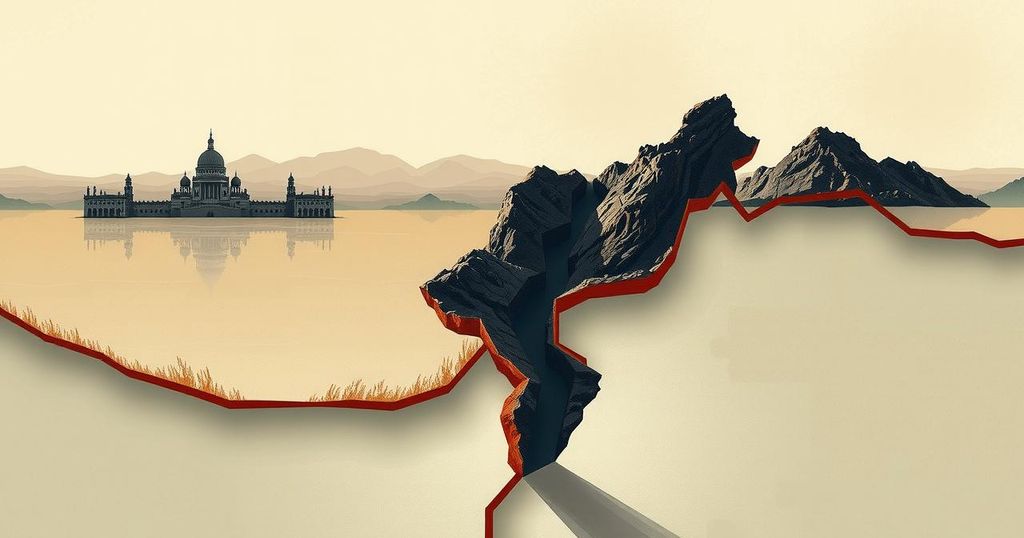Implications of Syrian Rebels’ Advances on Israel’s Border Dynamics

The IDF has increased troops in the Golan Heights due to southern Syrian rebels’ advances threatening Israel’s border. Historical tensions stemming from the Syrian Civil War reveal a complex relationship between Syrian factions and Israel. The outcome of the conflict may reshape the influence of Iranian forces near Israel, necessitating careful monitoring and response from the IDF.
On December 7, the Israel Defense Forces (IDF) mobilized additional troops for defensive operations in the Golan Heights, reacting to rapid developments in southern Syria. The advance of southern Syrian rebels, who have taken control of significant areas near the Golan border, raises concerns about possible spillover effects from the ongoing conflict in Syria into Israel’s territories.
Understanding the historical context is crucial. The Syrian Civil War, which erupted in 2011, began in Dara’a, leading to the establishment of rebel control along parts of the Israel-Syria border. These groups engaged in combat with the Syrian regime, which continued to dominate areas opposite Majdal Shams and the Druze village of Khadr.
In 2015, tensions escalated when certain southern Syrian factions threatened the Druze community in Syria. During this period, Israel provided humanitarian aid to wounded Syrians. Incidents occurred when local youths attacked an ambulance, mistaking the transported injured for rebel fighters who had opposed the Druze, highlighting the potential repercussions of the Syrian conflict on Israel.
One notable group was Jaish Khaled ibn Walid, an affiliate with loose ties to ISIS that posed minimal threats to Israel. Although it engaged in brief skirmishes with IDF forces, the group was ultimately vanquished in 2018, indicating the changing dynamics on Israel’s borders as different factions emerged and fell.
The rebels around Dara’a have historically received backing from Western powers and maintained better relationships than other groups in Syria, notably Hayat Tahrir al-Sham (HTS) in Idlib, known for its radical positions. As these former rebels now mount an offensive toward Damascus, their moderate stance presents an opportunity for stronger ties with Western nations.
Moreover, the return of these groups signifies a potential threat to pro-Iran elements like Hezbollah, who have established a presence in the Golan region. The Israeli military acknowledged attacks against UN peacekeeping positions in the vicinity of Hader, underscoring the volatile situation that necessitated IDF assistance and heightened military readiness in the area.
Israeli communities in the Golan Heights have organized security teams as a precaution against potential threats from Hezbollah, given previous targeted attacks that have resulted in casualties. The situation remains tense, with a particular focus on the Druze community in Suwayda that has begun to support the rebellion, which could significantly influence the conflict’s outcome.
Significantly, the fate of Iranian assets in Syria—such as the military installations in Kiswah—could be jeopardized as rebel forces advance. The rapidly changing dynamics in southern Syria will require close monitoring to determine how these developments impact the strategic balance and security of Israel’s northern border and regional stability.
The Syrian Civil War has its roots in unrest that began in 2011 in Dara’a, raising concerns for Israel as rebel factions began to control territories bordering Israel. Over the years, the complexities of the conflict have shifted allegiances, with different groups vying for power and posing varied degrees of threat to Israel. The IDF has remained vigilant, especially against pro-Iranian elements like Hezbollah, which have strained Israel’s security in the region.
The advance of Syrian rebel groups toward Damascus poses both potential threats and opportunities for Israel. As these factions push back against Iranian influences, Israel’s military presence in the Golan remains heightened. The situation requires ongoing vigilance as control of crucial areas may shift, influencing the overall stability and security of the region.
Original Source: www.jpost.com








